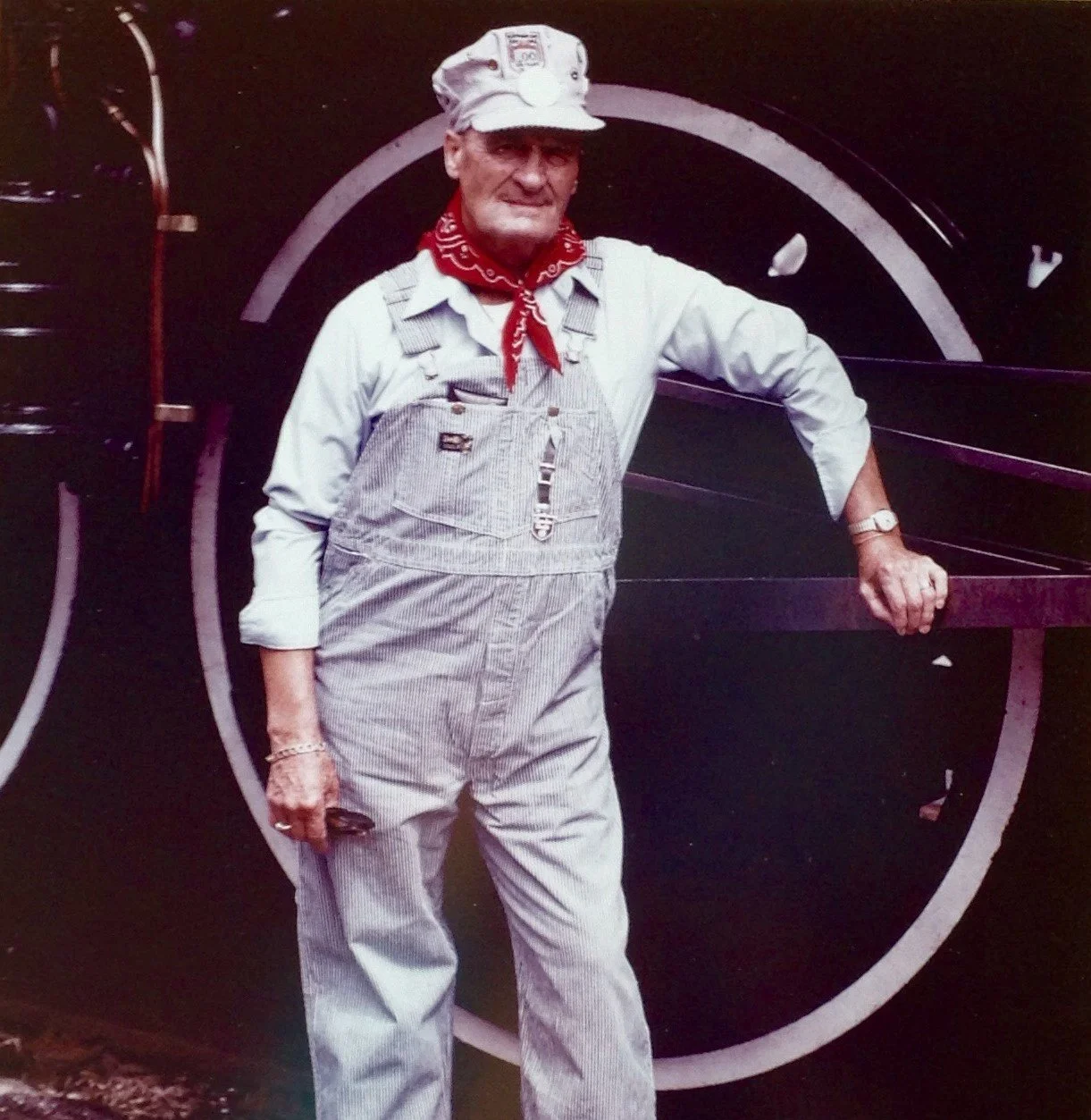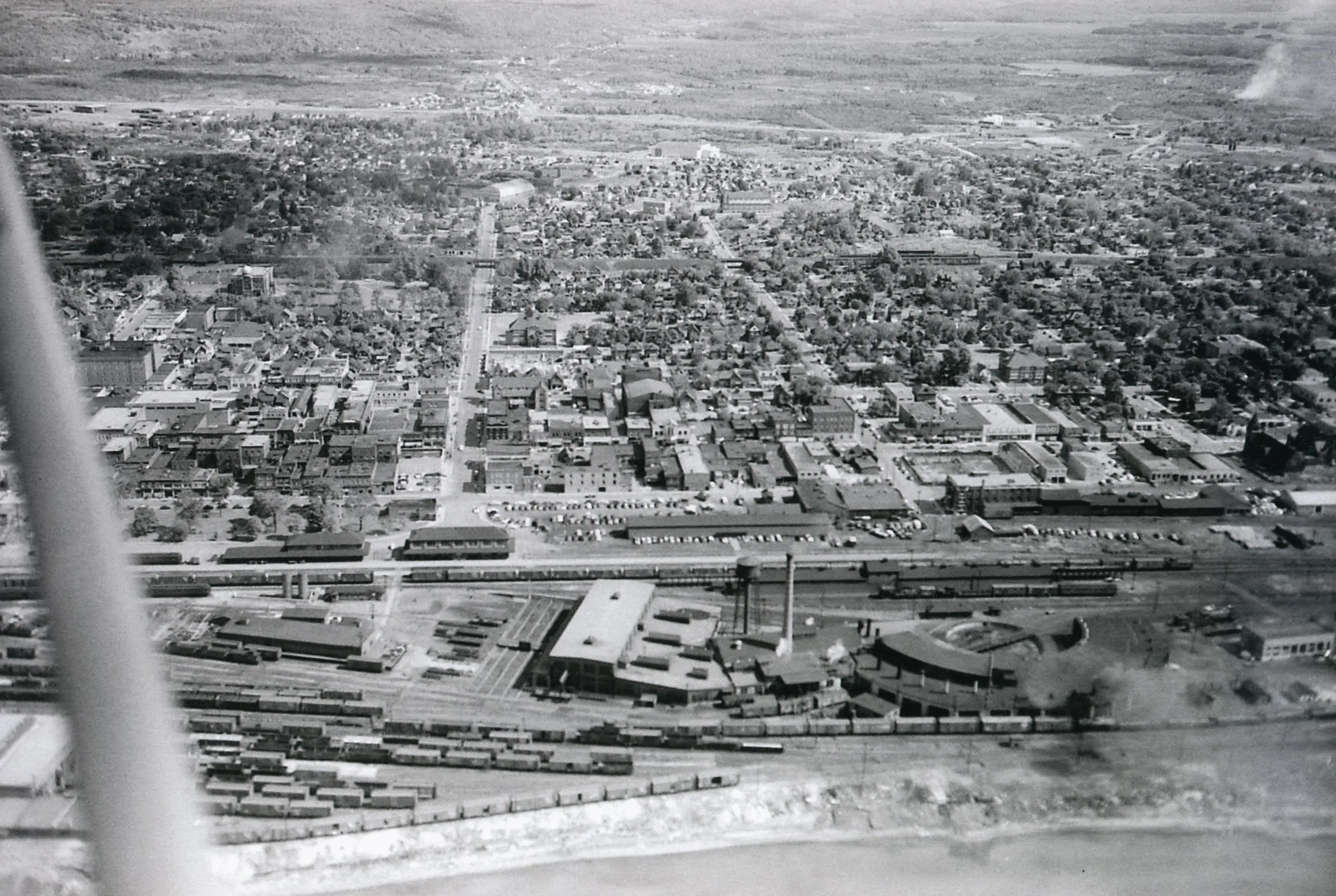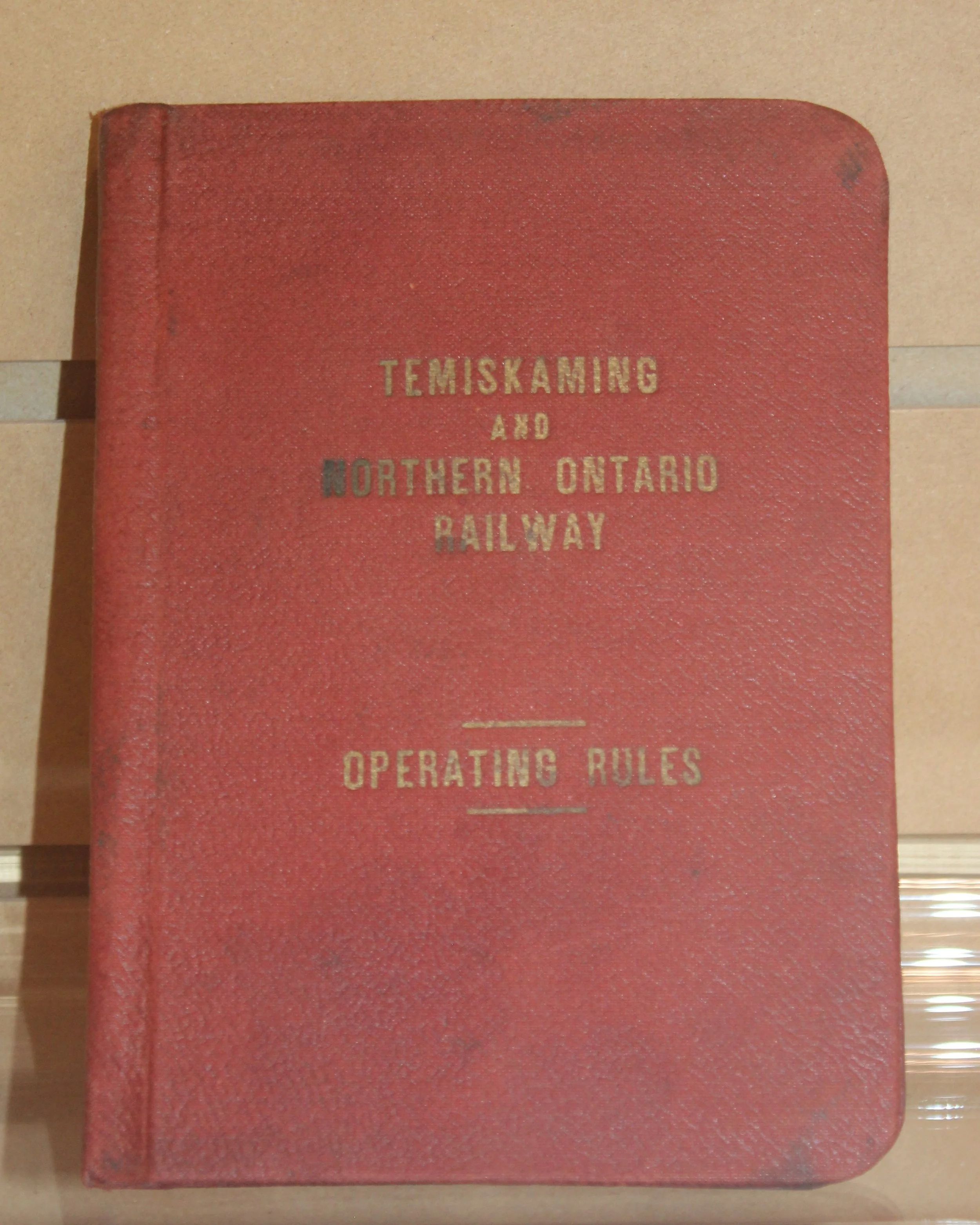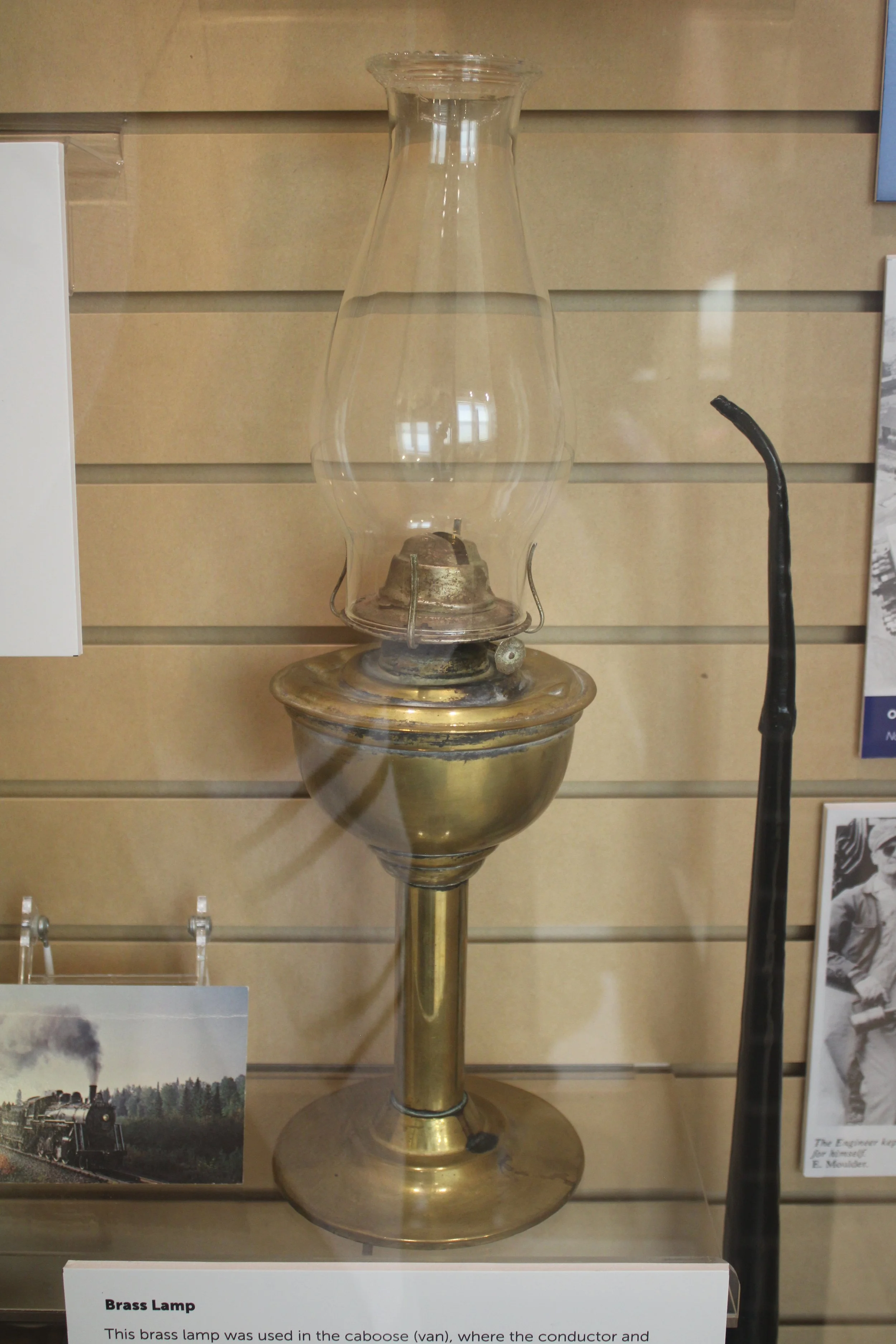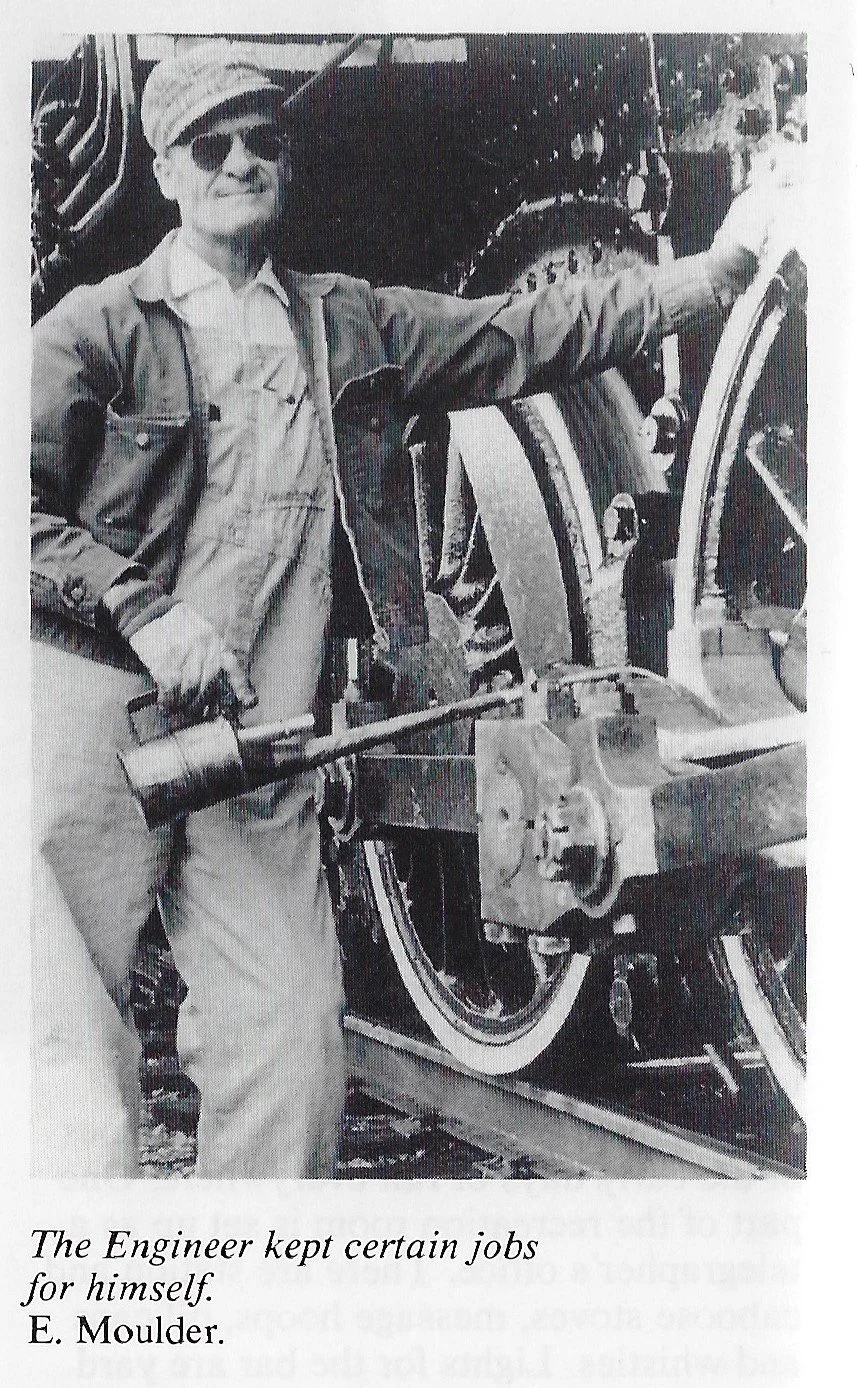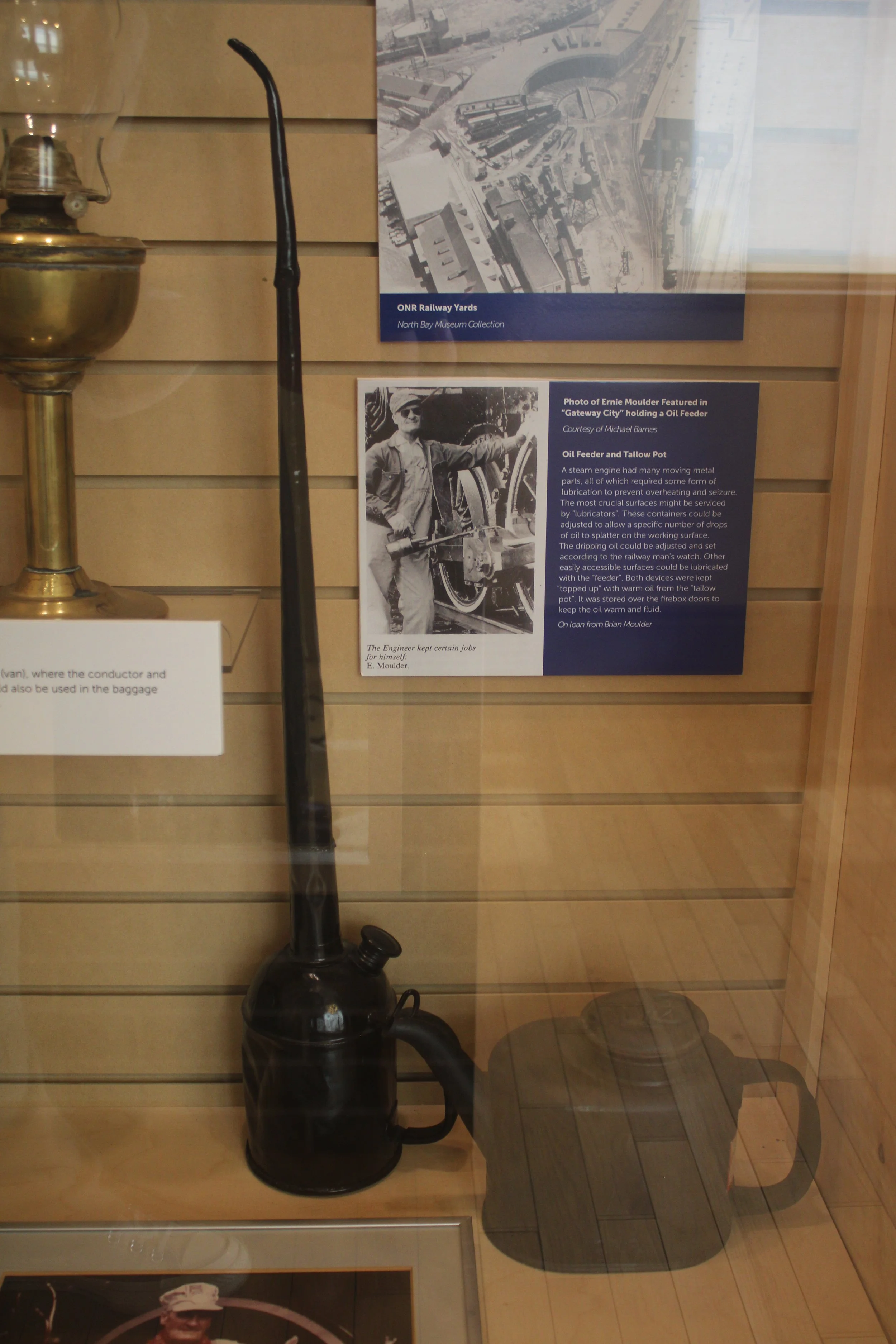Railwayman
GATEKEEPER OF THE NORTH
By 1916, three railway lines ran through North Bay.
Both the Canadian Pacific Railway (CPR) and the Temiskaming and Northern Ontario (T&NO) Railway (later the Ontario Northland Railway) had extensive yards, with the CPR station being rebuilt twice to accommodate growing demand. Ontario Northland utilized the Canadian National Railway station.
By 1911, the T&NO railway was the largest employer in North Bay, followed by the CPR.
Ernest (Ernie) Moulder joined the Temiskaming and Northern Ontario Railway during the Great Depression as part of the “Extra Gang”, completing jobs which ranged from sweeping shop floors to laying tracks.
After six years of seasonal work, Ernie became a full time employee and was eventually able to take tests to become a railway fireman and then an engineman operating out of North Bay. Ernie retired in 1975 after over 40 years of service.
Ernie Moulder, c.1970s
Ernie was very proud that his working career spanned both the steam and diesel eras. His interest in all things rail led to the preservation of an extensive collection of railway artifacts, many of which were donated to the North Bay Museum and Ontario Northland Archives.
ONR Yards with CPR Station in lower left
North Bay Museum Collection
ONR Railway Yards
North Bay Museum Collection
Ernie Moulder’s T&NO Code of Operating Rules Booklet, 1939
During the railway steam era, there was no way to communicate with a train between stations. There was no telephone or radio communication. All activities out on the line were governed by the watch, the approved train schedule, and the operating rules booklet. Neglecting to follow a rule could quickly lead to an accident, so it was important that all railway employees be aware of and diligently follow all rules that pertained to their duties. Non-compliance met with increasingly severe penalties such as demerit points, temporary suspension (sent home to “walk around”), loss of seniority, and potentially, loss of job.
Brass Lamp
This brass lamp was used in the caboose (van), where the conductor and train men lived on extended trips. It would also be used in the baggage and mail cars, stations, bunk houses, etc.
On Loan from Brian Moulder
Did You Know…
Despite the best efforts of railway employees, accidents happened. In the event of a mishap, minor or major, T&NO policemen would secure the area and ensure that cargo was not stolen while work crews restored order to the scene.
On Christmas holidays many of the boys living on the East End would work for the ONR as the “snow gang”, using heavy steel shovels to clear snow. You had to be 16 to join.
Photo of Ernie Moulder Featured in “Gateway City” holding an Oil Feeder
Courtesy of Michael Barnes
Oil Feeder and Tallow Pot
A steam engine had many moving metal parts, all of which required some form of lubrication to prevent overheating and seizure. The most crucial surfaces might be serviced by “lubricators”. These containers could be adjusted to allow a specific number of drops of oil to splatter on the working surface. The dripping oil could be adjusted and set according to the railway man’s watch. Other easily accessible surfaces could be lubricated with the “feeder”. Both devices were kept “topped up” with warm oil from the “tallow pot”. It was stored over the firebox doors to keep the oil warm and fluid.
On loan from Brian Moulder
Remember When…
“It took very little prompting to get my father Ernie talking about his role in the steam era. Discussions of “wig wags”, hand bombers, sand domes, D-rails, or even “crummies” might dampen his eye.
“Ernie long lamented the demise of the steam locomotive, so his spirits were certainly lifted when he was chosen to take the Centennial Engine #137 on its inaugural run in 1967.
“I remember teaching at Chippewa when my dad was chosen to do the first run. On a whim, I left my class to see my dad in action.
“As I approached, I heard my father respond to the question: “Are you ready to go Ernie?” “I am now; I see my boy coming.”
“I climbed into the cab and away we went.”
Cliff Moulder
Son of Ernie Moulder

